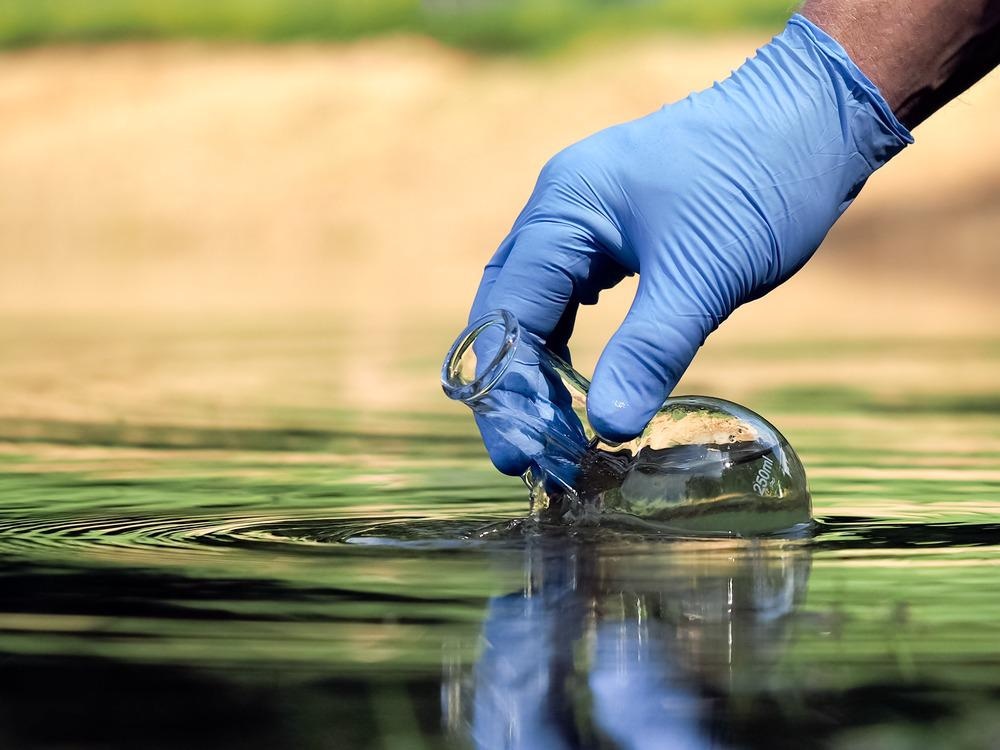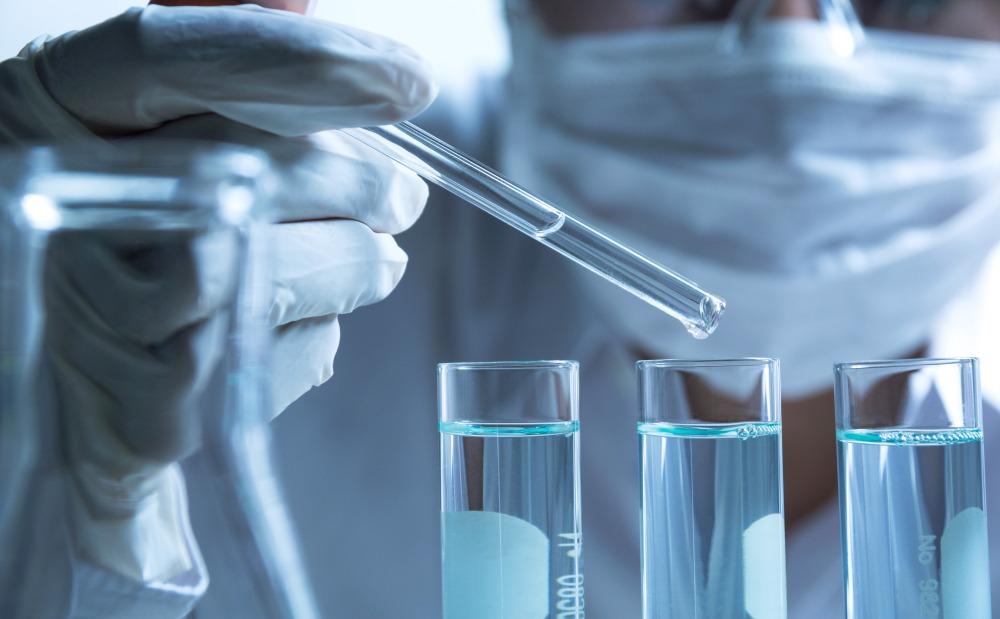In a recent study published in the journal Geostandards and GeoAnalytical Research, researchers from Germany conducted an elemental analysis of different water samples. They also included the study of several non-certified trace elements in research and validated the data for certified elements.

Image Credit: Irina Kozorog/Shutterstock.com
Elemental Analysis of Water Sources
Elemental concentration analysis of different water resources is widely used in various scientific studies because it provides valuable information. The elemental concentrations are analyzed by quantifying multiple trace elements in the water bodies.
The study of the trace element is significant because they have a critical role in oceanographic processes and biogeochemical cycles and are anthropogenically introduced in water bodies by several sources. Additionally, certain trace elements are considered to be contaminants, and their analysis is significant for the environment and health.
Industries and researchers widely use analytical methods for elemental quantification. Moreover, for the validation of analytical methods, matrix-matched certified reference materials (CRMs) are required for the accurate and traceable elemental analysis of water samples.
As a result, a wide range of water CRMs are available in the market, and they generally consist of bio-essential elements, oceanographic tracers, and contaminants. Although a wide range of CRMs is available in the market, the CRMs for rare earth metals and technologically advanced materials are unavailable.
The present study aimed to develop a method for the reliable quantification of 34 elements in different natural water sources. The study included analysis of classical heavy metals, certified elements determined, and non-certified elements.
Methodology
The researchers determined the concentrations of elements in different water sources using analytical and statistical methods. The certified and non-certified elements were investigated, and literature values for concentrations of elements were also gathered.
The preliminary lab work was carried out by the researchers in a clean room, and instruments were recalibrated according to experimental requirements. The water samples were collected from water sources that included drinking water, river water, estuarine water, as well as near-shore and main seawater.

Image Credit: Krisana Antharith/Shutterstock.com
For the quantification of 34 elements, an externally calibrated quantification method based on an optimized online preconcentration method was used. It must be noted that the process was coupled with inductively coupled plasma-mass spectrometry (ICP-MS/MS) to improve the accuracy of results. The consensus values were determined without considering the experimental results. For evaluation, multi-elemental data were pre-processed using software in time-resolved mode, and an Excel spreadsheet was used for data analysis.
Results
The results of certified elements were in line with the data estimated by the researchers. Additionally, the multi-element method was viable for aluminum, cadmium, copper, iron, magnesium, nickel, vanadium, zinc, and uranium in different water sources.
However, the values of cadmium and copper in estuarine and riverine waters, molybdenum in near-shore seawaters and open ocean seawaters, nickel in seawaters, and estuarine water, uranium in inshore seawaters, and zinc in estuarine water were not found viable. Additionally, new studies conducted for the revaluation of copper and cadmium in seawater were found to agree with the data calculated by the researchers.
More from AZoM: Laser Ablation for Elemental Analysis
With regard to the non-certified elements, the values of titanium, tungsten, and gallium results agreed with the study's findings but with some uncertainty. However, the results of thorium, tin, scandium, and indium were in good agreement with the study's findings.
According to the researchers, the determination of aluminum was difficult as the relative uncertainties were more than 40% in most cases. This is due to the fact that aluminum has a low affinity with regard to the testing conditions developed during the elemental analysis. Additionally, low aluminum concentrations in some water sources have also resulted in higher uncertainty. Notably, the results for aluminum detected in seawater using CRMs matched the results calculated in the study.
Although the measurement of iron gave reliable results, relative uncertainties of more than 70% for various brackish and seawater sources. The precision of iron CRMs during analysis could be due to the decreased affinity of iron during the testing.
Conclusions
To summarize, the online preconcentration ICP-MS/MS method allowed for the quantification of 34 elements in 17 different water CRMs ranging from freshwater to seawater. The method recommended by the researchers was reliable, time-sensitive, and versatile.
Moreover, the research also revealed that old CRMs are generally still usable and beneficial to the scientific community. The primary outcome of the study was identifying some elements that were not considered critical during the elemental concentration analysis of different water resources. As the scope of the study was broad, including a wide range of water matrices, certain limitations in the quantification of individual elements cannot be ruled out.
Latest Research
In a recent study published in the Journal of Chromatography A, researchers developed an online quantification method specifically related to halobenzoquinones in water. The main advantages of the process were accuracy and reproducibility. In another study published in the Journal of Analytical and Bioanalytical Chemistry, a new method was suggested by researchers for the identification of mobile and persistent organic substances in water. The techniques used were supercritical fluid chromatography and high-resolution mass spectrometry, and the researchers were able to generate results at a rapid rate.
References and Further Reading
Ebeling, A., Zimmermann, T., Klein, O., Irrgeher, J. and Pröfrock, D. (2022), Analysis of Seventeen Certified Water Reference Materials for Trace and Technology-Critical Elements. Geostand Geoanal Res. Accepted Author Manuscript. https://onlinelibrary.wiley.com/doi/10.1111/ggr.12422
Schulze, S., Paschke, H., Meier, T. et al. A rapid method for quantification of persistent and mobile organic substances in water using supercritical fluid chromatography coupled to high-resolution mass spectrometry. Anal Bioanal Chem 412, 4941–4952 (2020). https://link.springer.com/article/10.1007/s00216-020-02722-5
Cuthbertson AA, Bach C, Richardson SD, Dauchy X. A novel automated method for the quantification of ten halobenzoquinones in drinking water using online solid-phase extraction coupled with liquid chromatography tandem mass spectrometry. J Chromatogr A. 2020 Feb 8;1612:460642. doi: 10.1016/j.chroma.2019.460642. Epub 2019 Oct 19. https://pubmed.ncbi.nlm.nih.gov/31732155/
Disclaimer: The views expressed here are those of the author expressed in their private capacity and do not necessarily represent the views of AZoM.com Limited T/A AZoNetwork the owner and operator of this website. This disclaimer forms part of the Terms and conditions of use of this website.